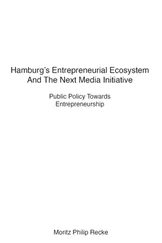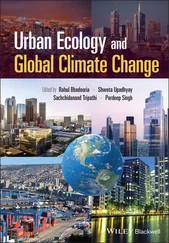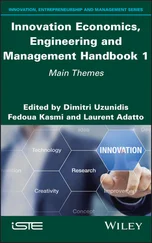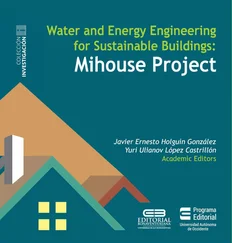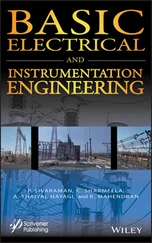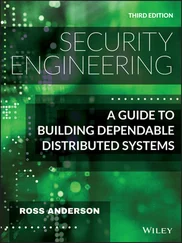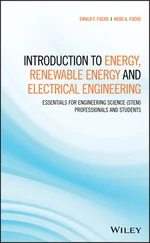1 Cover
2 Title Page Handbook of Ecological and Ecosystem Engineering Edited by Majeti Narasimha Vara Prasad School of Life Sciences University of Hyderabad (an Institution of Eminence)
3 Copyright Page
4 List of Contributors
5 Preface
6 1 Ecological Engineering and Ecosystem Services – Theory and Practice 1.1 Introduction 1.2 Ecological Engineering: History and Definition 1.3 Ecosystem Services: History, Concepts, and Dimensions 1.4 Final Considerations: Challenges for the Future References
7 2 Ecological and Ecosystem Engineering for Economic‐Environmental Revitalization 2.1 Introduction 2.2 Revitalization of Physical/Environmental Factors 2.3 Revitalization of Chemical Factors 2.4 Economic Revitalization of Degraded Soil Ecosystems 2.5 Conclusions References
8 3 Environmental Issues and Priority Areas for Ecological Engineering Initiatives 3.1 Introduction 3.2 Basic Concepts of Ecological Engineering 3.3 Practice and Implication of Ecological Engineering 3.4 Priority Areas for Ecological Engineering 3.5 Conclusion References
9 4 Soil Meso‐ and Macrofauna Indicators of Restoration Success in Rehabilitated Mine Sites 4.1 Introduction 4.2 Restoration to Combat Land Degradation 4.3 Mine Rehabilitation 4.4 Restoration Success Assessment: Monitoring Diversity, Vegetation, and Ecological Processes 4.5 Gaps in the Assessment of Restoration Success in Mine Sites 4.6 Increasing Restoration Success by Enhancing Soil Biodiversity and Soil Multifunctionality 4.7 Using Keystone Species and Ecosystem Engineers in Restoration 4.8 Conclusions and Further Perspective for the Restoration of Metalliferous Tailings References
10 5 Ecological Engineering and Green Infrastructure in Mitigating Emerging Urban Environmental Threats 5.1 Dimensions of Ecological Engineering in the Frame of Ecosystem Service Provision 5.2 Landfill Afteruse Practices Based on Ecological Engineering and Green Infrastructure 5.3 Role of Ecological Engineering in Transforming Brownfields into Greenfields 5.4 Green Infrastructures for Mitigating Urban Transport‐Induced Threats 5.5 Conclusions References
11 6 Urban Environmental Issues and Mitigation by Applying Ecological and Ecosystem Engineering 6.1 Urbanization 6.2 Global Trends of Urbanization and Its Consequences 6.3 Urban Environmental Issues 6.4 Ecosystem Engineering 6.5 Approaches for Mitigation of Urban Environmental Issues 6.6 Future Perspective Acknowledgments References
12 7 Soil Fertility Restoration, Theory and Practice 7.1 Introduction 7.2 Materials and Methods 7.3 Results 7.4 Discussion and Conclusions Acknowledgment References
13 8 Extracellular Soil Enzymes Act as Moderators to Restore Carbon in Soil Habitats 8.1 Introduction 8.2 Soil Organic Matter (SOM) 8.3 Soil Organic Carbon (SOC) 8.4 Soil Carbon Sequestration 8.5 Extracellular Soil Enzymes 8.6 Interactive Role of Extracellular Soil Enzymes in Soil Carbon Transformation 8.7 Conclusion References
14 9 Ecological Engineering for Solid Waste Segregation, Reduction, and Resource Recovery – A Contextual Analysis in Brazil 9.1 Introduction 9.2 Municipal Solid Waste in Brazil 9.3 Compostable Waste 9.4 Anaerobic Digestion 9.5 Recycling 9.6 Burning Waste Tires 9.7 Energy Recovery 9.8 Coprocessing Industrial Waste in Cement Kilns References
15 10 Urban Floods and Mitigation by Applying Ecological and Ecosystem Engineering 10.1 Sustainable Ecosystems through Engineering Approaches 10.2 Flooding and, Specifically, Urban Flooding as a Problem of Interest 10.3 Causes and Impacts of Urban Flooding 10.4 Protection Against and Mitigation of Urban Flooding in the Context of Sustainability 10.5 Conclusions and Future Scope References
16 11 Ecological Engineering and Restoration of Mine Ecosystems 11.1 Background and Definitions 11.2 Ecological Criteria for Successful Mine Site Restoration 11.3 Examples of Reclamation Technology and Afforestation in Mining Areas 11.4 Selected Reclamation Practices Versus Mining Extraction and Environmental Conditions 11.5 Final Comments and Remarks References
17 12 Ecological Restoration of Abandoned Mine Land: Theory to Practice 12.1 Introduction 12.2 Integration of Ecology Theory, Restoration Ecology, and Ecological Restoration 12.3 Restoration Planning 12.4 Components of Restoration 12.5 Afforestation of Mine‐Degraded Land 12.6 Methods of Evaluating Ecological Restoration Success 12.7 Development of a Post‐Mining Ecosystem: A Case Study in India 12.8 Conclusions and Future Research References
18 13 Wetland, Watershed, and Lake Restoration 13.1 Introduction 13.2 Renovation of Wastewater 13.3 Restoration of Bodies of Water 13.4 Problems Encountered in Restoration Projects 13.5 Conclusion References
19 14 Restoration of Riverine Health : An Ecohydrological Approach –Flow Regimes and Aquatic Biodiversity 14.1 Introduction 14.2 Habitat Ecology 14.3 Riverine Issues 14.4 Ecorestoration of River Basins 14.5 Summary and Conclusion Acknowledgments References
20 15 Ecosystem Services of the Phoomdi Islands of Loktak, a Dying Ramsar Site in Northeast India 15.1 What Are Ecosystem Services? 15.2 Phoomdi Islands of Loktak 15.3 Ecosystem Degradation of Loktak 15.4 Ecosystem Services Provided by the Phoomdi Islands of Loktak 15.5 Phoomdi and Provisioning Services 15.6 Phoomdi as Reservoirs of Biodiversity 15.7 Phoomdi and Fisheries 15.8 Phoomdi and Cultural Services 15.9 Phoomdi and Regulating Services 15.10 Phoomdi and Supporting Services 15.11 Conclusion Acknowledgments References
21 16 The Application of Reefs in Shoreline Protection 16.1 General Introduction 16.2 Types of Coral Reefs 16.3 Global Distribution of Coral Reefs 16.4 Benefits of Coral Reefs 16.5 Threats to Coral Reefs 16.6 Important Coral Reefs of the World 16.7 The Application of Reefs in Shoreline Protection 16.8 Conclusion References
22 17 Mangroves, as Shore Engineers, Are Nature‐Based Solutions for Ensuring Coastal Protection 17.1 Introduction 17.2 Sundarban: A Case Study 17.3 Restoration Models 17.4 Methodology 17.5 Results and Analysis 17.6 Conclusion Acknowledgments References
23 18 Forest Degradation Prevention Through Nature‐Based Solutions : An Indian Perspective 18.1 Introduction 18.2 Causes of Forests Degradation and Present Status Forests in India 18.3 Effects of Forest Degradation 18.4 Forest Degradation Management Strategies 18.5 Policies for Preventing Forest Degradation 18.6 Ecological Engineering: A Tool for Restoration of Degraded Forests 18.7 Forest Landscape Restoration: A Nature‐Based Solution 18.8 Success Stories of ER from India 18.9 Yamuna Biodiversity Park 18.10 Ecological Restoration in Corbett National Park 18.11 Conclusion and Recommendations References
24 19 Restoring Ecosystem Services of Degraded Forests in a Changing Climate 19.1 Introduction 19.2 Role of Forests in Maintaining Ecological Balance and Providing Services 19.3 Types of Forests in India 19.4 Forest Degradation 19.5 Impacts of Forest Degradation 19.6 Nutritional Status of Soil 19.7 Hydrological Regimes 19.8 Ecological Services 19.9 Social Implications 19.10 Methods for Restoring and Rehabilitating Forests 19.11 Conclusion References
25 20 Forest Degradation Prevention 20.1 Introduction 20.2 The Problem of Forest Degradation 20.3 Assessing Levels of Forest Degradation 20.4 Drivers of Forest Degradation 20.5 The Role of Forest Management in Degradation Prevention 20.6 Conclusions – Prioritization and Implementation References
26 21 Use of Plants for Air Quality Improvement 21.1 Introduction 21.2 Current Status of Air Pollutants 21.3 Green Roofs, Urban Forests, and Air Pollution 21.4 Traits for Phytoremediation of Air Pollution 21.5 Conclusions References
27 22 Phylloremediation for Mitigating Air Pollution 22.1 Introduction 22.2 Significance of Tree Canopy Architecture and Types of Canopies for Mitigating Air Pollution 22.3 Air‐Improving Qualities of Plants 22.4 Effects of Vegetation on Urban Air Quality 22.5 Urban Air Quality Improvement through Dust‐Capturing Plant Species Acknowledgments References
Читать дальше

